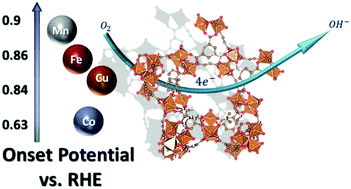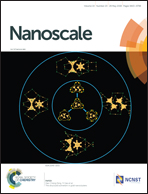Metal organic frameworks as a catalyst for oxygen reduction: an unexpected outcome of a highly active Mn-MOF-based catalyst incorporated in activated carbon
Abstract
Owing to their unique chemistry and physical properties, metal–organic frameworks (MOFs) are an interesting class of materials which can be utilized for a wide array of applications. MOFs have been proposed to be used as catalysts for fuel cells, but their low intrinsic electronic conductivity hampered their utilization as is. In this work, we present the synthesis and application of MOF-based precious-metal-group-free (PGM-free) catalysts for oxygen reduction based on a unique metal–organic framework–carbon composite material. Benzene tricarboxylic acid-based MOFs were synthesized inside activated carbon (AC) with four different, first row transition metals: Mn, Fe, Co, and Cu. The MOFs@AC were analyzed electrochemically to measure their catalytic activity. Further physical and chemical characterization studies are performed to measure the material properties. The MOFs@AC are found to be conductive and active catalysts for the oxygen reduction reaction in an alkaline environment. Surprisingly, the Mn-MOF-based@AC exhibits the best performance with an onset potential of 0.9 V vs. RHE and the almost four-electron mechanism, as opposed to most other known PGM-free catalysts, which show Fe and Co as the most active metals.



 Please wait while we load your content...
Please wait while we load your content...